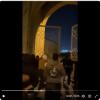
Breaking News
 Why Venezuela's Oil Matters So Much | The Hidden History Behind the Crisis
Why Venezuela's Oil Matters So Much | The Hidden History Behind the Crisis
 IRANIAN PROTESTERS BROKE GATES OF AYATOLLAHS' COMPOUND IN FARS PROVINCE
IRANIAN PROTESTERS BROKE GATES OF AYATOLLAHS' COMPOUND IN FARS PROVINCE
 'Sounds good to me': Trump suggests Rubio as Cuba's president, issues warning
'Sounds good to me': Trump suggests Rubio as Cuba's president, issues warning
 Trump asked US special forces to plan Greenland invasion,...
Trump asked US special forces to plan Greenland invasion,...
Top Tech News
 World's most powerful hypergravity machine is 1,900X stronger than Earth
World's most powerful hypergravity machine is 1,900X stronger than Earth
 New battery idea gets lots of power out of unusual sulfur chemistry
New battery idea gets lots of power out of unusual sulfur chemistry
 Anti-Aging Drug Regrows Knee Cartilage in Major Breakthrough That Could End Knee Replacements
Anti-Aging Drug Regrows Knee Cartilage in Major Breakthrough That Could End Knee Replacements
 Scientists say recent advances in Quantum Entanglement...
Scientists say recent advances in Quantum Entanglement...
 Solid-State Batteries Are In 'Trailblazer' Mode. What's Holding Them Up?
Solid-State Batteries Are In 'Trailblazer' Mode. What's Holding Them Up?
 US Farmers Began Using Chemical Fertilizer After WW2. Comfrey Is a Natural Super Fertilizer
US Farmers Began Using Chemical Fertilizer After WW2. Comfrey Is a Natural Super Fertilizer
 Kawasaki's four-legged robot-horse vehicle is going into production
Kawasaki's four-legged robot-horse vehicle is going into production
 The First Production All-Solid-State Battery Is Here, And It Promises 5-Minute Charging
The First Production All-Solid-State Battery Is Here, And It Promises 5-Minute Charging
 See inside the tech-topia cities billionaires are betting big on developing...
See inside the tech-topia cities billionaires are betting big on developing...
Roman Space Telescope AKA WFIRST Field of View 100 Times Hubble

The funding for this and all NASA projects is precarious. NASA's ability to execute on large, multi-year science project has also been less than reliable.
Roman uses an existing 2.4-meter wide field-of-view primary mirror and uses two main scientific instruments. The Wide-Field Instrument is a 288-megapixel multi-band near-infrared camera, providing a sharpness of images comparable to that achieved by the Hubble Space Telescope (HST) over a 0.28 square degree field of view, 100 times larger than that of the HST. The Coronagraphic Instrument is a high-contrast, small field-of-view camera and spectrometer covering visible and near-infrared wavelengths using novel starlight-suppression technology.
A study has found that the Roman Space Telescope will be ten times better at finding rogue planets. : The Astronomical Journal – Predictions of the Nancy Grace Roman Space Telescope Galactic Exoplanet Survey. II. Free-floating Planet Detection Rates
Samson A. Johnson, Matthew Penny, B. Scott Gaudi, Eamonn Kerins, Nicholas J. Rattenbury, Annie C. Robin, Sebastiano Calchi Novati, and Calen B. Henderson, 2020 August 21.

 Storage doesn't get much cheaper than this
Storage doesn't get much cheaper than this

